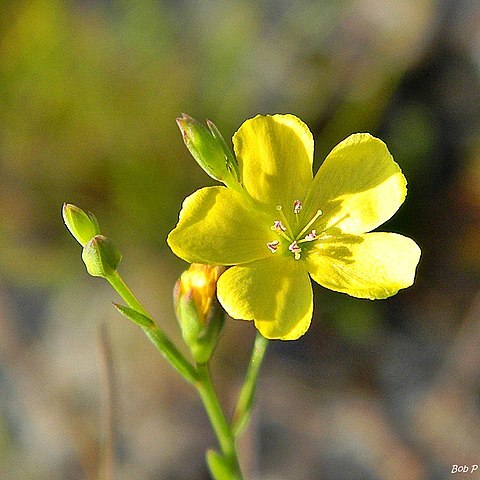Herbs, perennial, 20–110 cm, glabrous. Stems erect, usually unbranched, sometimes branched from base. Leaves: proximal usually opposite, distal alternate, rarely all alternate, appressed-ascending; stipular glands absent; blade linear-oblanceolate or oblanceolate, 10–20 × 1–3.2 mm, margins entire, not ciliate, apex sharply acute. Inflorescences corymbs. Pedicels 0.5–3.5 mm. Flowers: sepals persistent, narrowly lanceolate, outer sepals 2.5–4.5 mm, inner somewhat shorter, broader than outer, margins not scarious, inner conspicuously glandular-toothed, outer entire, apex acute; petals lemon yellow, obovate, 5.5–9.5 mm; stamens 2 mm; anthers 0.5–1.5 mm; staminodia absent; styles distinct, 2–4.5 mm; stigmas capitate. Capsules pyriform or ovoid, 2–3.4 × 2–3 mm, apex obtuse or minutely 5-apiculate, dehiscing freely into 10, 1-seeded segments, segments persistent on plant, false septa nearly complete, proximal margins not ciliate. Seeds 1.6–2.5 × 0.7–1.2 mm.
More
Much like no. 6 [Linum intercursum E. P. Bicknell], but with more numerous (mostly 50–150) lvs below the infl, these narrower, linear-oblanceolate or oblanceolate; infl mostly smaller; pet 6–10 mm; fr ovoid or ovoid-globose or pyriform, scarcely pointed; false septa nearly complete, glabrous, as also the true septa; 2n=36. Moist or dry woods and pine-barrens on the coastal plain; se. Va. to Fla. and La., n. in the Mississippi Valley to s. Ill.; isolated near D.C. June, July. (Cathartolinum f.)

